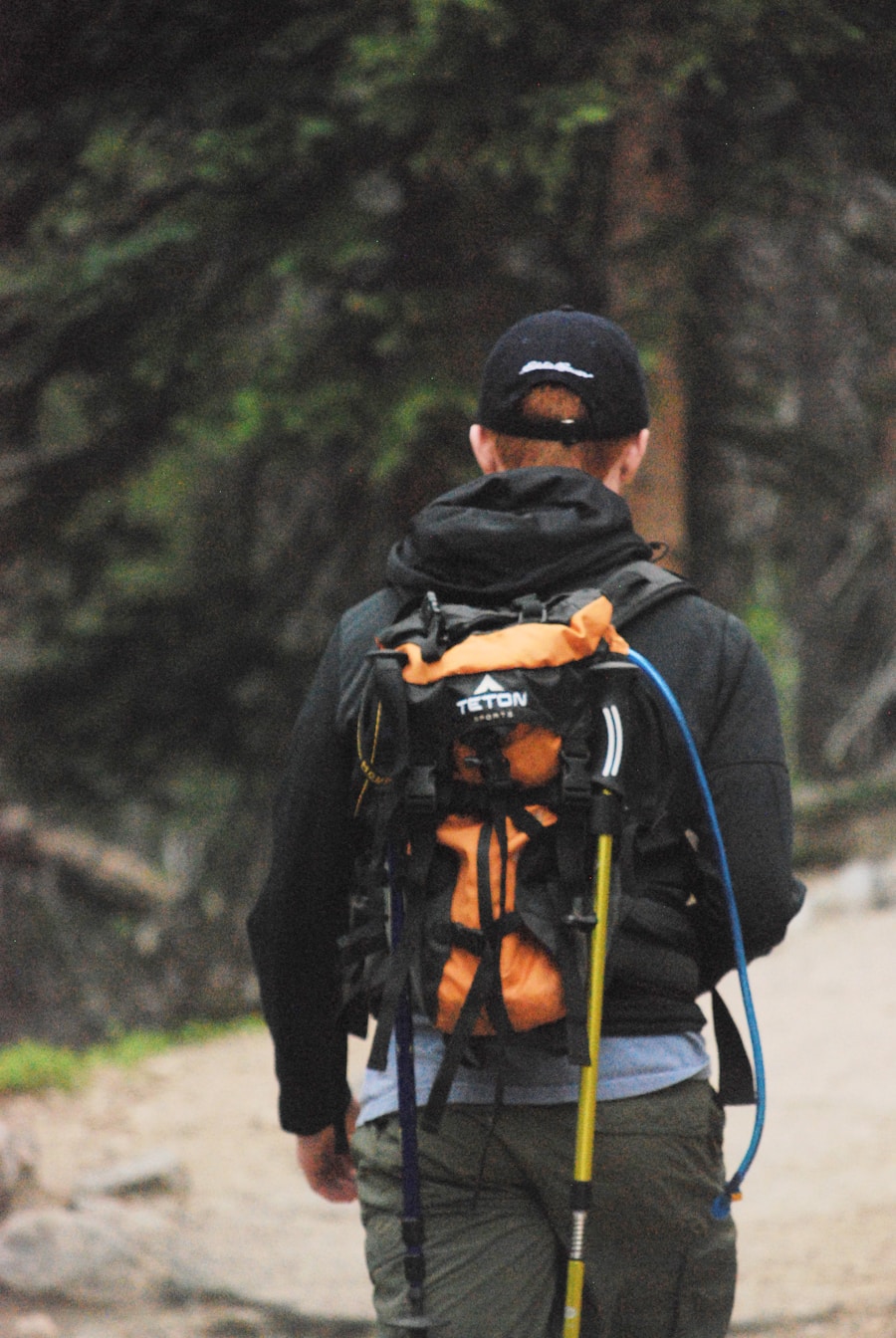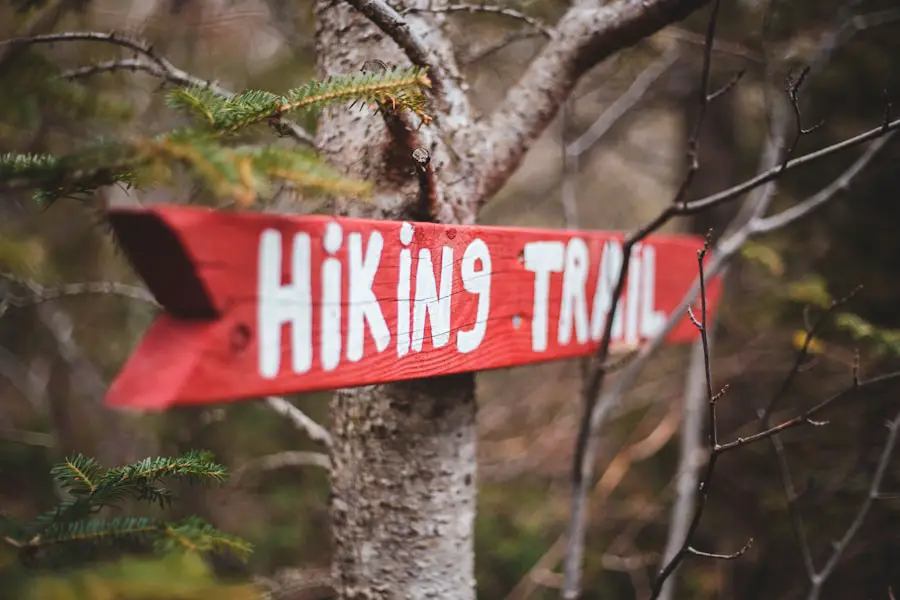Effective planning and preparation are the cornerstones of any successful outdoor adventure. Before embarking on a hiking trip, it is essential to conduct thorough research about the chosen trail, including its length, difficulty level, and any potential hazards. This involves not only looking at maps and guidebooks but also checking online resources, such as hiking forums and local park websites, which often provide up-to-date information on trail conditions.
Understanding the specifics of the route can help hikers anticipate challenges, such as steep ascents, rocky terrain, or river crossings, allowing them to prepare mentally and physically for the journey ahead. In addition to understanding the trail, preparation should also include logistical considerations. This means planning for transportation to and from the trailhead, determining the best time to start the hike to avoid crowds or extreme weather, and ensuring that all necessary permits are obtained if required.
Creating a detailed itinerary that includes estimated times for each segment of the hike can help keep the group on track. Moreover, sharing this itinerary with a trusted friend or family member who will not be joining the hike is a prudent safety measure. This way, someone will know your expected return time and can alert authorities if you do not return as planned.
Key Takeaways
- Proper planning and preparation are essential for a successful hiking trip.
- Choosing the right gear and equipment can make a significant difference in your hiking experience.
- Understanding the terrain and trail will help you navigate and anticipate challenges.
- Staying hydrated and nourished is crucial for maintaining energy and stamina during the hike.
- Being mindful of weather conditions can ensure your safety and comfort during the hike.
Choosing the Right Gear and Equipment
Selecting appropriate gear and equipment is crucial for ensuring comfort and safety during a hike. The foundation of any hiking outfit begins with footwear; investing in high-quality hiking boots or shoes that provide adequate support and traction is essential. The right footwear can prevent blisters and injuries, especially on uneven or rocky terrain.
Additionally, wearing moisture-wicking socks can help keep feet dry and comfortable throughout the hike. Beyond footwear, layering clothing is vital for adapting to changing temperatures and weather conditions. A moisture-wicking base layer, an insulating mid-layer, and a waterproof outer layer can help regulate body temperature and protect against the elements.
Beyond clothing, other essential gear includes a well-fitted backpack that can comfortably carry all necessary supplies without causing strain. A good backpack should have adjustable straps, multiple compartments for organization, and a hydration system or space for water bottles. Essential items to pack include a first aid kit, navigation tools such as a map and compass or GPS device, a multi-tool or knife, and emergency supplies like a whistle and flashlight.
Depending on the length of the hike, additional items such as trekking poles can provide stability and reduce strain on joints during steep descents or ascents.
Understanding the Terrain and Trail

A comprehensive understanding of the terrain and trail is vital for any hiker aiming to navigate successfully through natural landscapes. Different trails present unique challenges based on their geographical features. For instance, mountainous trails may involve significant elevation changes that require physical endurance and careful pacing.
Conversely, coastal trails might present hazards such as loose sand or slippery rocks. Familiarizing oneself with the specific characteristics of the chosen trail can help hikers prepare for these challenges effectively. Moreover, understanding the trail’s ecosystem can enhance the hiking experience.
Trails often traverse diverse environments, from dense forests to open meadows or rocky outcrops. Each environment hosts unique flora and fauna that can be fascinating to observe. For example, a hiker traversing a forested trail may encounter various tree species, wildflowers, and possibly wildlife such as deer or birds.
Recognizing these elements not only enriches the journey but also fosters a deeper appreciation for nature. Additionally, being aware of potential hazards associated with specific terrains—such as loose rocks on mountain trails or muddy sections in wetlands—can help hikers make informed decisions about their pace and route.
Staying Hydrated and Nourished
| Metrics | Recommendation |
|---|---|
| Daily Water Intake | 8-10 cups for adults |
| Hydration Level | Urine color should be pale yellow |
| Electrolyte Balance | Consume foods high in potassium and magnesium |
| Meal Frequency | 3 meals and 2 snacks per day |
| Vegetable Intake | 5 servings per day |
Maintaining proper hydration and nutrition is critical during any hiking expedition. Dehydration can lead to fatigue, dizziness, and impaired judgment, all of which can significantly impact a hiker’s ability to navigate safely. It is generally recommended that hikers drink water regularly throughout their journey rather than waiting until they feel thirsty.
A good rule of thumb is to consume about half a liter of water per hour during moderate activity in moderate temperatures; however, this amount may need to be adjusted based on individual needs and environmental conditions. In addition to hydration, fueling the body with nutritious snacks is essential for sustaining energy levels during a hike. High-energy foods such as nuts, granola bars, dried fruits, and jerky are excellent choices because they are lightweight, non-perishable, and easy to pack.
Complex carbohydrates like whole-grain crackers or energy bars provide sustained energy release, while protein-rich snacks help with muscle recovery. Planning meal breaks at regular intervals can also enhance the overall experience by allowing hikers to rest and enjoy their surroundings while replenishing their energy reserves.
Being Mindful of Weather Conditions
Weather conditions can dramatically influence the safety and enjoyment of a hiking trip. Before heading out, it is crucial to check the weather forecast for the area where you will be hiking. Sudden changes in weather can occur in mountainous regions or other unpredictable environments; therefore, being prepared for various scenarios is essential.
For instance, if rain is forecasted, hikers should ensure they have waterproof gear and consider whether they need to adjust their plans accordingly. Moreover, understanding how different weather conditions affect trail conditions is vital for safety. Rain can make trails muddy and slippery, increasing the risk of falls or injuries.
Conversely, extreme heat can lead to dehydration or heat exhaustion if proper precautions are not taken. Hikers should be aware of signs of heat-related illnesses and know how to respond if they or someone in their group begins to show symptoms. By staying informed about weather conditions and their potential impact on hiking plans, adventurers can make better decisions that prioritize safety while still enjoying their time outdoors.
Knowing Your Limits and Setting Realistic Goals

One of the most important aspects of hiking is recognizing personal limits and setting realistic goals based on individual fitness levels and experience. Every hiker has different capabilities; what may be an easy hike for one person could be challenging for another. It is essential to assess your physical condition honestly before embarking on a hike.
Factors such as recent injuries, overall fitness level, and experience with similar trails should all be considered when choosing a route. Setting achievable goals not only enhances safety but also contributes to a more enjoyable experience. For instance, if you are new to hiking or have not been active recently, it may be wise to start with shorter trails that have less elevation gain before attempting more strenuous hikes.
Gradually increasing difficulty allows hikers to build endurance and confidence over time. Additionally, being flexible with goals during the hike—such as turning back if conditions become too challenging—demonstrates an understanding of personal limits that prioritizes safety over reaching a destination.
Practicing Leave No Trace Principles
The Leave No Trace principles are essential guidelines designed to minimize human impact on natural environments while enjoying outdoor activities like hiking. These principles encourage hikers to respect nature by leaving trails as they found them—free from litter or disturbances caused by human activity. One of the most fundamental aspects of Leave No Trace is packing out all trash generated during the hike, including food wrappers, water bottles, and any other waste items.
In addition to litter management, Leave No Trace emphasizes staying on designated trails to protect fragile ecosystems from damage caused by foot traffic. Straying off established paths can lead to soil erosion and harm native plants and wildlife habitats. Hikers should also be mindful of campfire regulations; in many areas, campfires are prohibited due to fire risk or environmental concerns.
Instead of building fires, hikers can opt for portable stoves for cooking meals while minimizing their impact on the environment.
Being Aware of Wildlife and Natural Hazards
Awareness of wildlife encounters and natural hazards is crucial for ensuring safety during hikes in natural areas. Many trails pass through habitats where wildlife thrives; therefore, hikers should educate themselves about local species they may encounter—both those that are harmless and those that pose risks. For example, understanding how to behave when encountering bears or snakes can prevent dangerous situations from arising.
Carrying bear spray in bear country is advisable; knowing how to use it effectively can be life-saving. Natural hazards also encompass environmental factors such as unstable terrain or sudden weather changes that could pose risks during a hike. Hikers should remain vigilant about their surroundings at all times—watching for loose rocks on steep slopes or slippery surfaces after rain can prevent accidents.
Additionally, being aware of potential hazards like flash floods in low-lying areas or avalanches in snowy regions is essential for making informed decisions about when to proceed or turn back during a hike. By maintaining awareness of both wildlife interactions and natural hazards, hikers can navigate their adventures with greater confidence and safety.
If you’re planning a hiking trip, it’s important to be prepared and avoid common mistakes that can ruin your experience. One helpful article to check out is “5 Must-Have Minimalist Travel Backpacks for Spring Adventures 2025” which provides recommendations for lightweight and functional backpacks that will make your hiking trip more enjoyable. Having the right gear, like a good backpack, can help prevent common hiking mistakes such as overpacking or carrying a heavy load. Check out the article here for more information on choosing the right backpack for your next hiking adventure.
FAQs
What are some common hiking mistakes to avoid?
Some common hiking mistakes to avoid include not packing enough water, not wearing appropriate footwear, not checking the weather forecast, and not informing someone of your hiking plans.
How can I avoid getting lost while hiking?
To avoid getting lost while hiking, it’s important to stay on marked trails, carry a map and compass, and familiarize yourself with the trail before starting your hike. It’s also a good idea to bring a GPS device or smartphone with a hiking app.
What should I do if I encounter wildlife while hiking?
If you encounter wildlife while hiking, it’s important to keep your distance and not approach or feed the animals. Make noise to alert them of your presence and slowly back away. It’s also a good idea to research the wildlife in the area before your hike to know how to react in different situations.
How can I prevent injuries while hiking?
To prevent injuries while hiking, it’s important to wear appropriate footwear, use trekking poles for stability, and take breaks to rest and stretch. It’s also important to be mindful of your surroundings and watch your step to avoid tripping or slipping.
What should I do if I encounter severe weather while hiking?
If you encounter severe weather while hiking, seek shelter if possible and wait for the weather to pass. If you’re unable to find shelter, it’s important to have the proper gear to protect yourself from the elements, such as a waterproof jacket and extra layers. Always check the weather forecast before heading out on a hike.
